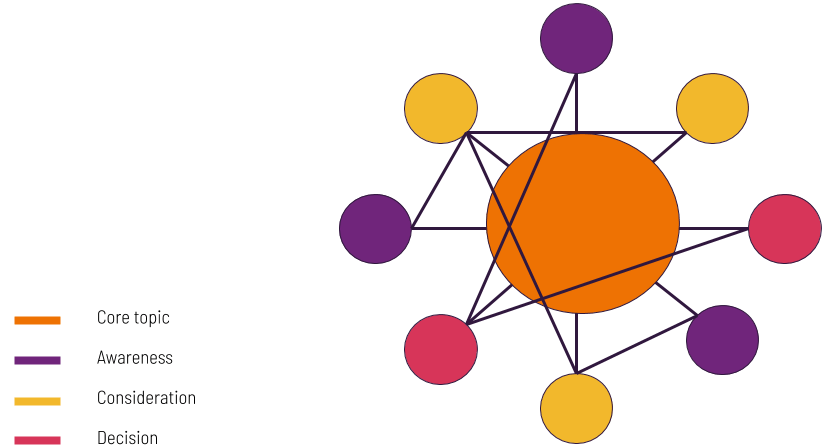The future of work is remote. And the COVID-19 pandemic has brought that future forward a number of years. With marketers around the world now at home, how do you manage your small marketing team with a work-from-home mindset?
First, it’s important to highlight the proven benefits of working from home. One Stanford study found that allowing employees to work remotely led to a 13% performance increase compared to their in-office counterparts. Additionally, working remotely can allow you to avoid commutes, office distractions and maintain a healthier work/life balance.
A healthier balance between work and family life and the satisfaction that comes with greater autonomy are benefits that talented professionals are increasingly taking into account when evaluating job offers: 80% of respondents on a survey stated that they would turn down a job offer that didn’t offer flexible working.
When I met WordPress Founder Matt Mullenweg in 2015, his entire company was already 100% distributed (remote) with employees from 36 countries around the world. This allows the company to work around the clock and builds in another layer of productivity.
Related: Listen to Matt Mullenweg’s podcast, Distributed, that explores the future of work.
Year after year, more companies decide to hire for remote positions and open themselves up to the possibilities of acquiring talent from a global pool.
Some other completely remote companies include GitHub, Basecamp and InVision.
Companies that allow for remote work benefit from a more productive and loyal workforce and reduced costs, as they need to invest less in real estate and office space and can focus their resources on their core business.
It’s also a sensitive policy to help fight climate change and bring your organization to the right side of the fight against global warming. The more people work from home, the less they need to pick up a car.
What are the benefits of a work-from-home mindset to management?

Key actions to develop a work-from-home approach to team management

1. Promote asynchronous and proactive communication
Remote workers may be in a different time zone or may have a different working schedule. You could try to concentrate meetings and calls on a short set of hours where there is an overlap between all members of the team. But the best option for regular contact is to move to asynchronous communication. Tools like Slack can allow you to maintain contact with your team while allowing them to work at their own schedules and flag their availability. When communicating with remote colleagues you should specify when you need an answer to a request, specify if it’s urgent, and, if it’s not, allow your colleague to respond on their own time. Remote teams should communicate with each other as much as possible. Don’t assume your colleagues know that you took the morning off to go to the dentist. Remind them the day before, block the time in your calendar and mark your availability in Slack or any other tool to allow everyone to know when you’ll be back.2. All meetings should be online, accessible, structured and documented
Marketing teams need meetings to plan, discuss, analyze, report and brainstorm together. Teams with a work-from-home mindset use tools that allow people to work remotely to join the meetings and interact with them as much as their in-office colleagues. The first point is to move all the meetings online. If you want to book a room as well, do so, but create an online meeting for people to join remotely for remote employees and those that wanted to work from home that day. Ideally, all or most meetings should be done via videoconference. Each meeting should have a clear structure and a well-defined agenda, with requirements and tasks that people should complete before going into the meeting, like reading a document or reviewing a design. A commitment to this kind of meeting prep will ensure that the time spent in the meeting is focused and productive. Finally, all meetings should be thoroughly documented, and meeting notes distributed afterward to ensure all team members are on the same page. We don’t want someone with a bad audio connection to miss out on an important discussion.3. Document all you can to maximize transparency
In fact, the organization should take a proactive approach to document all discussions and decisions. This doesn’t mean increasing the bureaucracy of the organization or sending an endless stream of memos that won’t be read. It could be as simple as posting a chat message about a conversation that you had with a colleague during lunch over a project or posting pictures of post-its or whiteboards after a workshop to ensure that remote team members have access to that information too.4. Use only working tools that allow collaboration between team members
Project management is the main challenge for teams that are wholly or partly remote. An online project management tool will allow the project stakeholders and everyone else on the team to have visibility on each other’s tasks while allowing flexibility for each team member to work on their own schedule. This system allows as well for documenting progress and decisions, with a clear overview of the project’s status. Other tools like Google Docs and Slack can also increase collaboration and visibility between team members, and provide an extra degree of clarity as everyone is working with the latest version of any file.5. Plan a physical meeting for your small marketing team
Regardless of your team members’ status and location, if you have the budget, plan for bringing your team together at least once a year. One of the drawbacks of being remote is that you don’t have the micro-interactions that come with sharing an office to build cohesiveness and empathy into the team. Having a physical meeting allows the relationship between your team members to become stronger by having some shared experiences.A work-from-home mindset keeps your company ready for the future

JustCo and Metigy have entered a partnership to offer Metigy’s marketing solution










